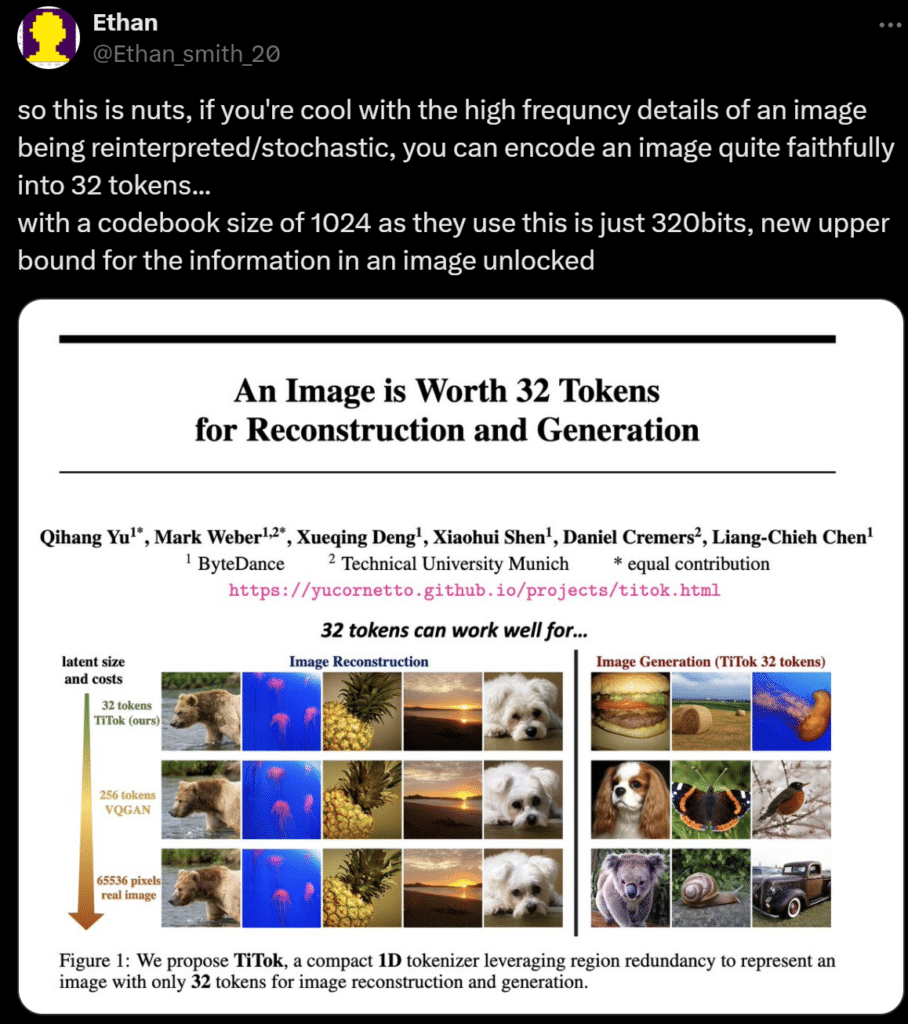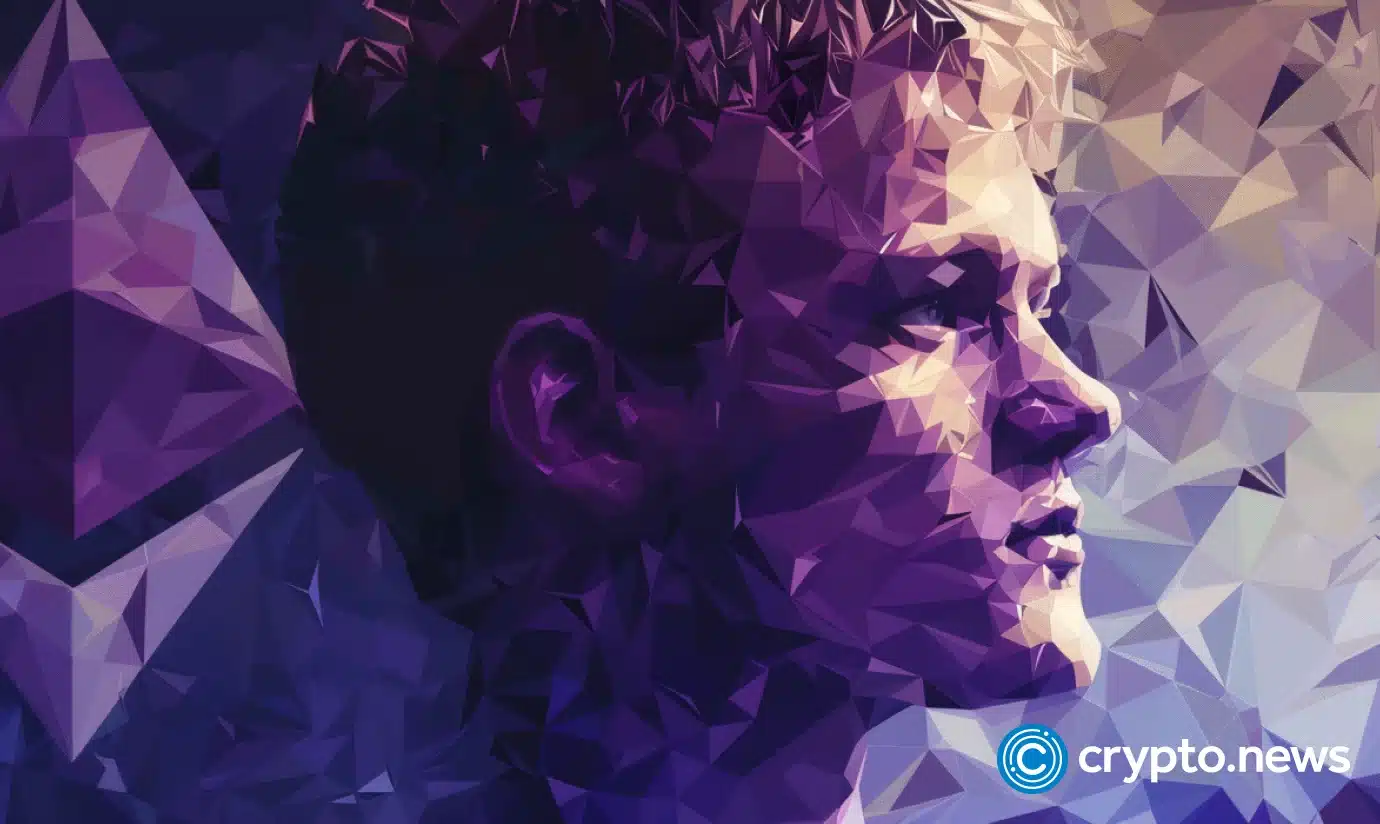[ad_1]
Based on Ethereum (ETH) co-founder Vitalik Buterin, the brand new picture compression methodology Token for Picture Tokenizer (TiTok AI) can encode pictures to a dimension giant sufficient so as to add them onchain.
On his Warpcast social media account, Buterin referred to as the picture compression methodology a brand new approach to “encode a profile image.” He went on to say that if it might probably compress a picture to 320 bits, which he referred to as “principally a hash,” it might render the photographs sufficiently small to go on chain for each consumer.
The Ethereum co-founder took an curiosity in TiTok AI from an X submit made by a researcher on the synthetic intelligence (AI) picture generator platform Leonardo AI.
The researcher, going by the deal with @Ethan_smith_20, briefly defined how the tactic might assist these curious about reinterpretation of high-frequency particulars inside pictures to efficiently encode complicated visuals into 32 tokens.

Buterin’s perspective suggests the tactic might make it considerably simpler for builders and creators to make profile photos and non-fungible tokens (NFTs).
Fixing earlier picture tokenization points
TiTok AI, developed by a collaborative effort from TikTok mum or dad firm ByteDance and the College of Munich, is described as an progressive one-dimensional tokenization framework, diverging considerably from the prevailing two-dimensional strategies in use.
Based on a analysis paper on the picture tokenization methodology, AI permits TiTok to compress 256 by 256-pixel rendered pictures into “32 distinct tokens.”
The paper identified points seen with earlier picture tokenization strategies, similar to VQGAN. Beforehand, picture tokenization was doable, however methods had been restricted to utilizing “2D latent grids with mounted downsampling elements.”
2D tokenization couldn’t circumvent difficulties in dealing with the redundancies discovered inside pictures, and shut areas had been exhibiting a whole lot of similarities.
TiTok, which makes use of AI, guarantees to resolve such a difficulty, through the use of applied sciences that successfully tokenize pictures into 1D latent sequences to offer a “compact latent illustration” and get rid of area redundancy.
Furthermore, the tokenization technique might assist streamline picture storage on blockchain platforms whereas delivering outstanding enhancements in processing pace.
Furthermore, it boasts speeds as much as 410 occasions quicker than present applied sciences, which is a large step ahead in computational effectivity.
[ad_2]
Source link




